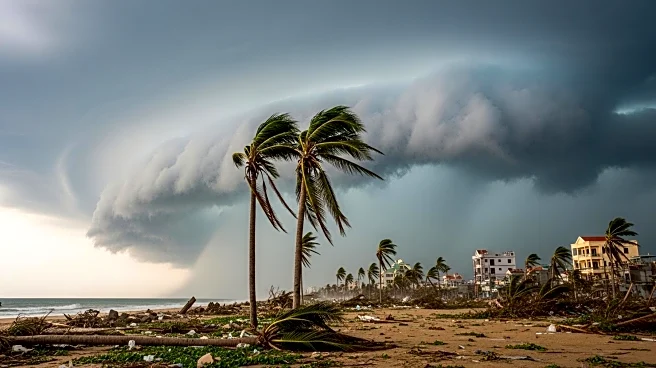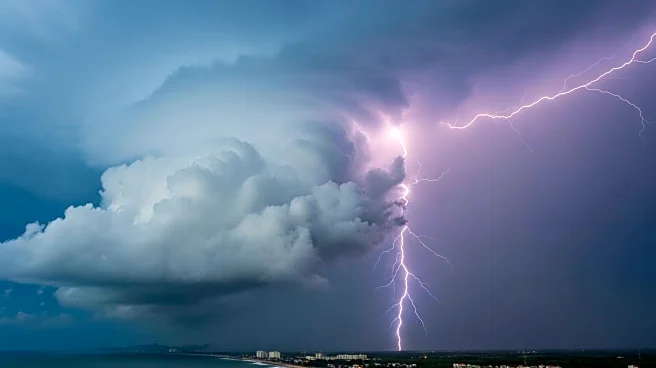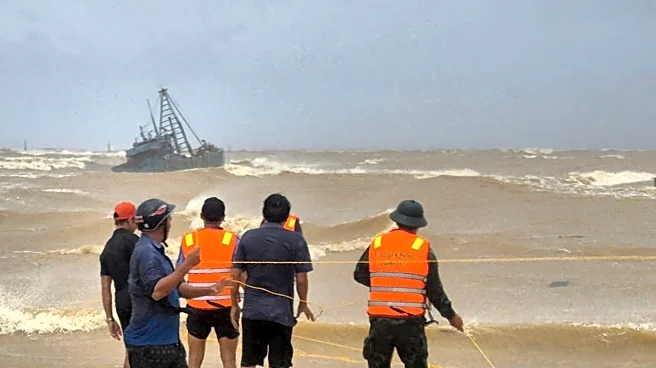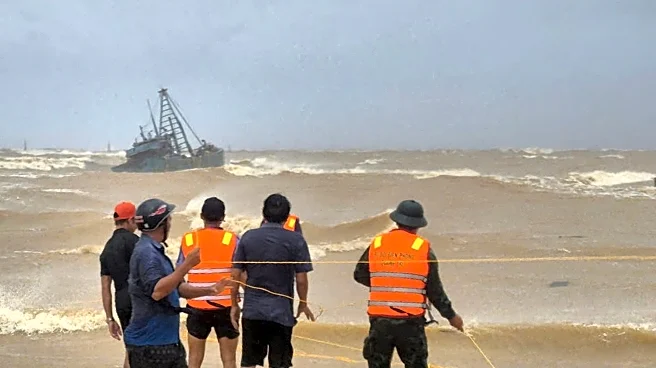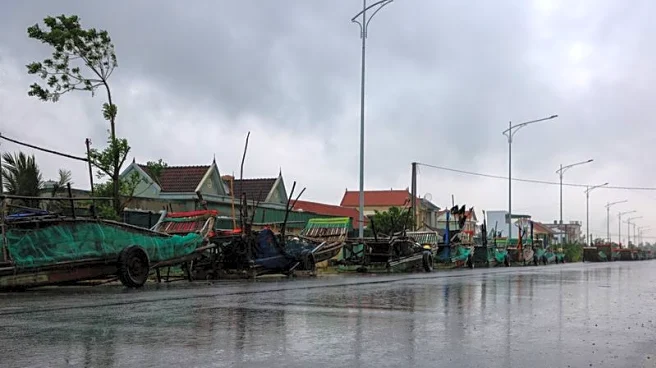What's Happening?
Vietnam's government has reported that Typhoon Bualoi caused an estimated $303 million in property damage. The typhoon made landfall in northern central Vietnam, resulting in at least 29 deaths and leaving 22 people missing. It severely damaged infrastructure, including roads, schools, and offices, and caused power outages affecting tens of thousands of families. The agricultural sector suffered significant losses, with over 34,000 hectares of crops destroyed.
Why It's Important?
The typhoon's impact on Vietnam highlights the country's vulnerability to natural disasters, which can have devastating effects on its economy and infrastructure. As a regional manufacturing hub, disruptions to industrial operations could have broader economic implications. The agricultural losses may affect food supply and prices, impacting both local and international markets. The disaster underscores the need for improved disaster management and infrastructure resilience.
What's Next?
Vietnam will likely focus on recovery efforts, including restoring power and rebuilding damaged infrastructure. The government may seek international aid and support to assist in recovery and rebuilding efforts. There could be increased investment in disaster preparedness and infrastructure resilience to mitigate future impacts. The agricultural sector may need support to recover from crop losses and ensure food security.


